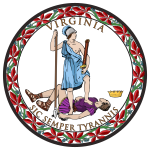
United States gubernatorial elections were held on November 2, 2004, in 11 states and two territories. There was no net gain in seats for either party, as Democrats picked up an open seat in Montana while defeating incumbent Craig Benson in New Hampshire, while Republicans defeated incumbent Joe Kernan in Indiana and won Missouri after Bob Holden lost in the primary. These elections coincided with the presidential election.

United States gubernatorial elections were held on November 5, 2002, in 36 states and two territories. The Republicans won eight seats previously held by the Democrats, as well as the seat previously held by Minnesota governor Jesse Ventura, who was elected on the Reform Party ticket but had since renounced his party affiliation. The Democrats won 10 seats previously held by the Republicans, as well as the seat previously held by Maine governor Angus King, an independent. The elections were held concurrently with the other United States elections of 2002.

United States gubernatorial elections were held on November 7, 2000, in 11 states and two territories. The elections coincided with the presidential election. Democrats gained one seat by defeating an incumbent in West Virginia. As of 2024, this remains the last gubernatorial cycle in which a Democrat won in Indiana.

The 1986 Illinois gubernatorial election was held on November 4, 1986. Republican candidate James R. Thompson won a fourth term in office, defeating the Illinois Solidarity Party nominee, former United States Senator Adlai Stevenson III, by around 400,000 votes.

The 1822–23 United States Senate elections were held on various dates in various states. As these U.S. Senate elections were prior to the ratification of the Seventeenth Amendment in 1913, senators were chosen by state legislatures. Senators were elected over a wide range of time throughout 1822 and 1823, and a seat may have been filled months late or remained vacant due to legislative deadlock. In these elections, terms were up for the senators in Class 2.
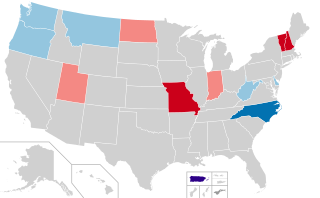
United States gubernatorial elections were held on November 8, 2016, in 12 states and two territories. The last regular gubernatorial elections for nine of the 12 states took place in 2012. The last gubernatorial elections for New Hampshire, Oregon, and Vermont took place in 2014, as Oregon held a special election due to the resignation of Governor John Kitzhaber, while the governors of New Hampshire and Vermont both serve two-year terms. The 2016 gubernatorial elections took place concurrently with several other federal, state, and local elections, including the presidential election, Senate, and House elections.

United States gubernatorial elections were held on November 8, 2022, in 36 states and three territories. As most governors serve four-year terms, the last regular gubernatorial elections for all but two of the seats took place in the 2018 U.S. gubernatorial elections. The gubernatorial elections took place concurrently with several other federal, state, and local elections, as part of the 2022 midterm elections.

The 2024 United States elections are scheduled to be held on Tuesday, November 5, 2024. During this presidential election year, the president and vice president will be elected. In addition, all 435 seats in the United States House of Representatives and 34 of the 100 seats in the United States Senate will be contested to determine the membership of the 119th United States Congress. Thirteen state and territorial governorships and numerous other state and local elections will also be contested.

United States gubernatorial elections were held on November 2, 2021, in two states, New Jersey and Virginia, and a recall election was held in California on September 14. These elections form part of the 2021 United States elections. The last gubernatorial elections for New Jersey and Virginia were in 2017, and the last regular gubernatorial election for California was in 2018. Going into the elections, all three seats were held by Democrats.

The 1822 New Hampshire gubernatorial election was held on March 12, 1822.

United States gubernatorial elections are scheduled to be held on November 5, 2024, in 11 states and two territories. The previous gubernatorial elections for this group of states took place in 2020, except in New Hampshire and Vermont where governors only serve two-year terms and elected their governors in 2022. In addition to state gubernatorial elections, the territories of American Samoa and Puerto Rico will also hold elections for their governors.

The 2023 Virginia Senate election was held on Tuesday, November 7, 2023, concurrently with elections for the Virginia House of Delegates, to elect senators to all 40 seats in the Senate of Virginia for the 163rd and 164th Virginia Assembly. Nomination primaries held through the Department of Elections were held June 20, 2023. These were the first elections held following redistricting as a result of the 2020 census.

The 1824 Virginia gubernatorial election was held on 30 November 1824 in order to elect the Governor of Virginia. Incumbent Democratic-Republican Governor of Virginia James Pleasants won re-election in the Virginia General Assembly as he ran unopposed.

The 1823 Virginia gubernatorial election was held on 30 November 1823 in order to elect the Governor of Virginia. Incumbent Democratic-Republican Governor of Virginia James Pleasants won re-election in the Virginia General Assembly as he ran unopposed.
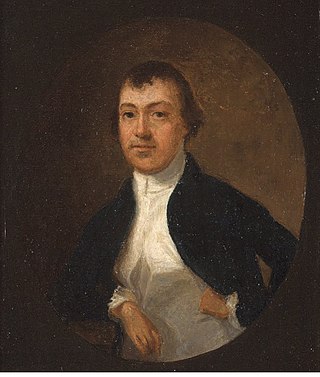
The 1820 Virginia gubernatorial election was held on 30 November 1820 in order to elect the Governor of Virginia. Incumbent Democratic-Republican Governor of Virginia Thomas Mann Randolph Jr. defeated fellow Democratic-Republican nominee, nominee for Governor in the 1808 Virginia gubernatorial election and incumbent member of the U.S. House of Representatives from Virginia's 22nd district Hugh Nelson in a Virginia General Assembly vote.

The 1819 Virginia gubernatorial election was held on 30 November 1819 in order to elect the Governor of Virginia. Incumbent Democratic-Republican member of Virginia House of Delegates Thomas Mann Randolph Jr. defeated fellow Democratic-Republican nominee and former member of the U.S. House of Representatives from Virginia's 13th district Burwell Bassett and incumbent Democratic-Republican Speaker of the Virginia House of Delegates Linn Banks in a Virginia General Assembly vote.
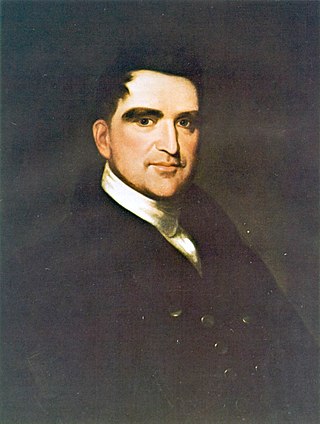
The 1813 Virginia gubernatorial election was held on 30 November 1813 in order to elect the Governor of Virginia. Incumbent Democratic-Republican Governor of Virginia James Barbour defeated fellow Democratic-Republican nominee and incumbent member of the U.S. House of Representatives from Virginia's 17th district James Pleasants in a Virginia General Assembly vote.
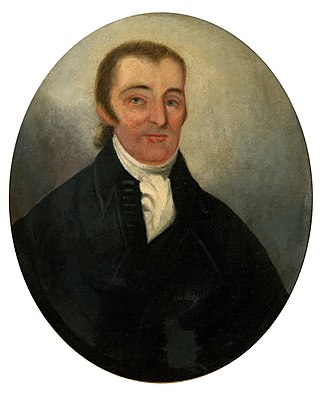
The 1811 Virginia gubernatorial election was held on 30 November 1811 in order to elect the Governor of Virginia. Incumbent Democratic-Republican acting Governor of Virginia George William Smith defeated fellow Democratic-Republican nominee and incumbent Speaker of the Virginia House of Delegates James Barbour in a Virginia General Assembly vote.

The 1811 Virginia gubernatorial special election was held on January 18, 1811, in order to elect the Governor of Virginia following the resignation of incumbent Governor John Tyler Sr. on January 15 after his appointed to a seat on the United States District Court for the District of Virginia by President James Madison. Former Democratic-Republican Governor of Virginia James Monroe defeated fellow Democratic-Republican nominee and former member of the Virginia House of Delegates George William Smith in a Virginia General Assembly vote.

The 1808 Virginia gubernatorial election was held on 30 November 1808 in order to elect the Governor of Virginia. Former Democratic-Republican Speaker of the Virginia House of Delegates John Tyler Sr. defeated fellow Democratic-Republican nominee and incumbent Speaker of the Virginia House of Delegates Hugh Nelson in a Virginia General Assembly vote.
